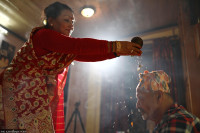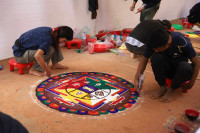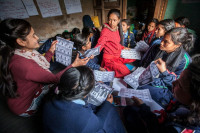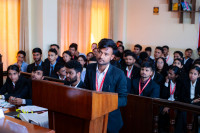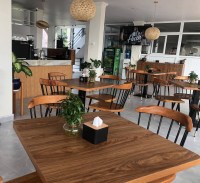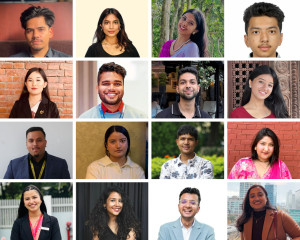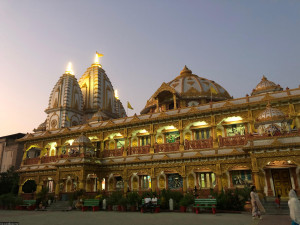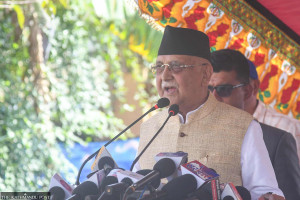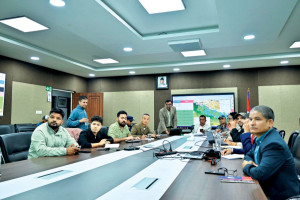Culture & Lifestyle
Restoring what time and theft took away
The ‘International Conference on Recovery of Cultural Heritage’ united experts to discuss the repatriation of stolen artefacts.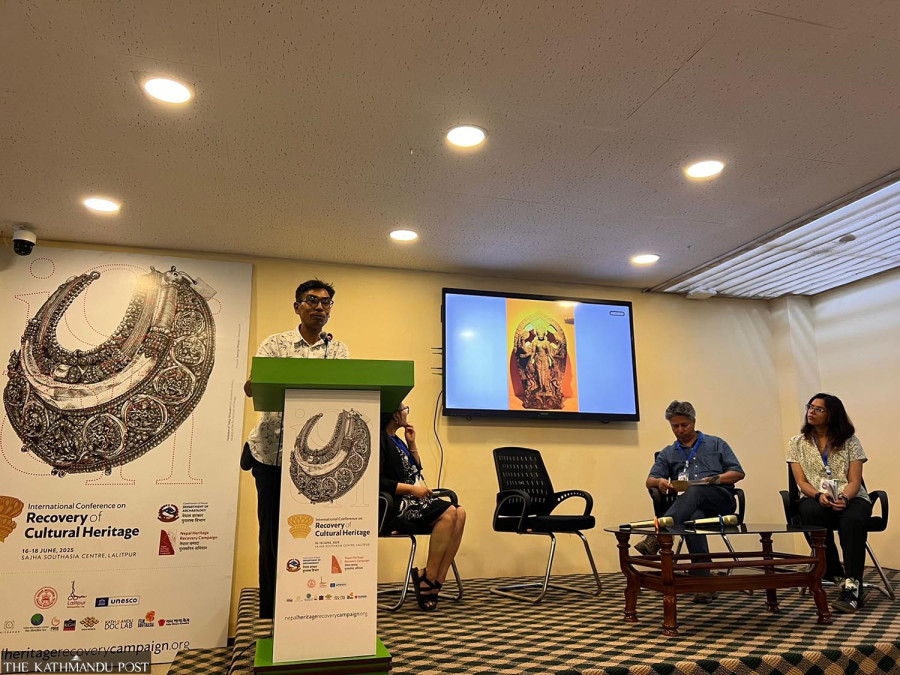
Sanskriti Pokharel & Reeva Khanal
The ‘International Conference on Recovery of Cultural Heritage’ was held from June 16 to 18 in collaboration with the Nepal Heritage Recovery Campaign (NHRC) and the Department of Archaeology.
The three-day forum aimed to address urgent and complex issues surrounding the theft, illicit trafficking, and repatriation of looted and stolen cultural artefacts. It also explored how the return of such heritage contributes to justice, healing, and reconciliation for communities and nations affected by cultural loss. The conference featured various participants, including legal practitioners, policymakers, scholars, journalists, and activists from many countries and disciplines.
The opening remarks were delivered by Kanak Mani Dixit, conference convenor and vice chair of NHRC. Saubhagya Pradhananga, Repatriation of Nepal’s Heritage director-general, Department of Archaeology, and Erin L Thompson, art crime professor at John Jay College of Criminal Justice (City University of New York), also delivered keynote speeches.
The first session, ‘Repatriation Perspectives: Poland, Cambodia, India,’ featured notable figures such as Diana Mroczek, Meychean Phuy, and Vijay Kumar, co-founder of the India Pride Project and advisor to NHRC. Helena Arose, director of programmes at The Antiquities Coalition, moderated the session.
Mroczek emphasised the legal and ethical responsibility surrounding cultural property, stating, “Archaeological items are the property of the state. No individual has the right to claim ownership or remove them.”
Phuy highlighted the issue of unintentional possession and transfer of heritage items, noting, “Accidental trafficking can occur when individuals unknowingly come into possession of artefacts.”
Kumar reflected on the historical context of heritage loss, saying, “India has always been a welcoming country. Many came, and when they left, they took parts of our heritage with them.”
Similarly, the second session, ‘Dealers of the Past: Ethics and Exploitation in the ‘Art’ Market,’ featured Edmond de Talliac, Lea Saint-Raymond, and Roshan Mishra. Sangeeta Thapa, director of the Siddhartha Arts Foundation, moderated the session.
This interdisciplinary gathering delved into various strategies, from legal frameworks and policy reform to historical art research, investigative journalism, media engagement, and emerging digital technologies, to strengthen efforts to safeguard cultural property and restore it to its rightful custodians.
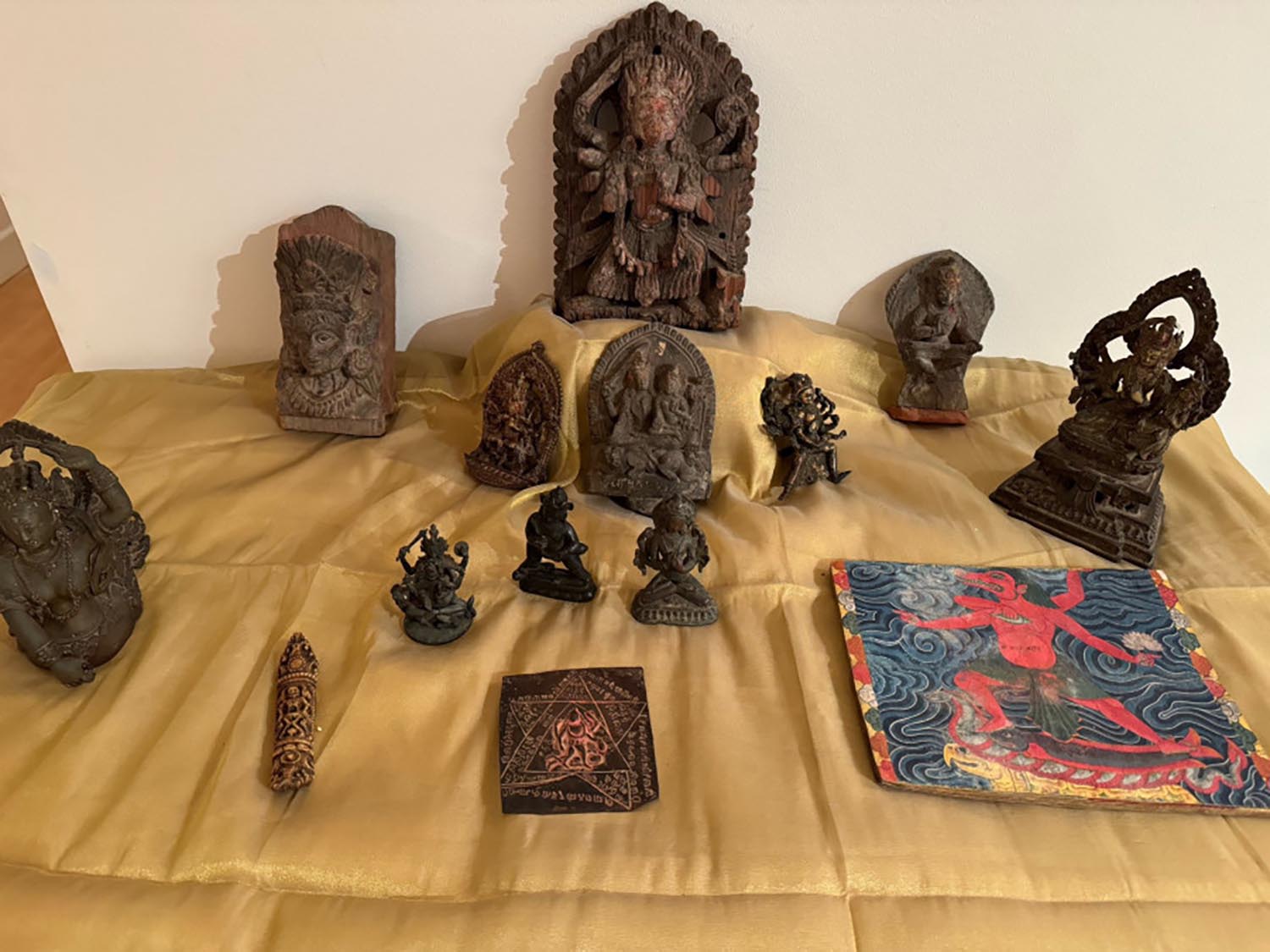
Day two began with a keynote address by Professor Amr Al-Azm of Shawnee State University and co-director of the ATHAR Project.
The first session, ‘The Law of Return: International Frameworks and Repatriation,’ featured a panel including Emiline Smith, Hao Liu, and Yatish Ojha. Aastha Dahal moderated the session.
Another highlight was the session on ‘Digital Interventions in the Repatriation of Cultural Heritage’, which showcased innovative tools and approaches by speakers such as Anjan Shrestha, Nischal Ghinanju, and Bibhor Bista. Morokoth Ingh also participated, and Kumar moderated the session.
These discussions highlighted the growing importance of digital platforms in identification, awareness, and mobilisation efforts concerning repatriation, indicating a progressive shift in the tools used to reclaim cultural identities.
Professor Al-Azm moderated a session titled ‘Heritage at Risk in Times of Crisis’. This discussion addressed the vulnerability of cultural heritage during periods of conflict, natural disaster, and political instability, highlighting the urgent need for safeguarding measures and international cooperation.
Bradley J Gordon and Melina Antoniadis spoke during ‘Cambodia’s Campaign to Repatriate Its Stolen Antiquities’ session. The panel detailed Cambodia’s proactive legal, diplomatic, and investigative efforts in the preservation and recovery of stolen artefacts, offering a case study of successful repatriation campaigns.
The session titled ‘Tools for Advocacy and Heritage Recovery’ featured insightful contributions from Suresh Lakhe, Chakshita Rana, and Rabindra Puri.
In his presentation, Lakhe spoke about the revival of intangible cultural heritage—a reclamation of cultural identity for the people of Patan. He referenced the return of the Lakshmi-Narayan statue, describing how its repatriation moved the local community in Patan and evoked a broader sense of restoration and pride across Nepal.
Following this, Rana highlighted the pivotal role of digital media in contemporary heritage advocacy. She emphasised that while curiosity lies at the heart of all research and advocacy efforts, today’s digital platforms have become instrumental in amplifying such initiatives. She pointed out how individuals of all age groups engage with heritage conversations and underlined the growing importance of both international and Nepali media in generating awareness and facilitating critical dialogue.
During the discussion, Puri shared that his efforts in heritage and cultural preservation began as an awareness campaign but soon evolved into powerful forms of advocacy. As international media took interest, his heritage preservation efforts—especially through the Museum of Stolen Art—gained visibility and momentum and became an effective tool for outreach and conservation.
The other panel discussions also featured various insightful sessions exploring the interplay between cultural identity, legal frameworks, and living traditions.
The session, ‘Living Culture: The Valley of Swoniga,’ brought together panellists Rushel Shilpakar, Alok Siddhi Tuladhar, and Birat Raj Bajracharya. Rishi Amatya, writer, heritage interpreter, and program associate at UNESCO, moderated it.
Later, two more sessions were held—‘Role of Cultural Property Agreements’ and ‘Living Culture Beyond the Valley Swoniga’. The first featured Helena Arose, James K Reap, and Nguyen Hai Ninh as panellists, with Semanta Dahal, advocate and partner at Abhinava Law Chambers, moderating the session.
The second panel, which welcomed Chandra Kishore, Prabita Shrestha, and Ramesh Kumar Dhungel as panellists, was moderated by Kiran Nepal, the editor of the Centre for Investigative Journalism, Nepal (CIJ Nepal).
The third day started with a UNESCO Heritage Tour, a guided visit to the National Museum of Nepal, Chhauni, led by Amatya. This was followed by a session on Heritage Diplomacy, featuring speakers Pradeep Gyawali (former foreign minister of Nepal), Jaco du Toit (UNESCO country representative to Nepal), Mike Harker (acting deputy chief of mission, US Embassy in Nepal). Kanak Mani Dixit moderated the session.
The conference concluded with closing reflections by Dilendra Shrestha, NHRC’s founding member, and a final address by Sunita Dangol, deputy mayor of Kathmandu Metropolitan City.
The event followed a two-day film screening event ‘Loot & Return: 4 Documentaries’, held from June 14 to 15 at YalaMaya Kendra. This event highlighted real-world cases of heritage theft and restitution. Later this year, the Patan Museum will host a multimedia exhibition titled ‘Absent Gods: Nepal’s Lost Heritage’ from July 31 to August 4, showcasing the stories of Nepal’s stolen deities and the movement to bring them back.




 18.12°C Kathmandu
18.12°C Kathmandu

